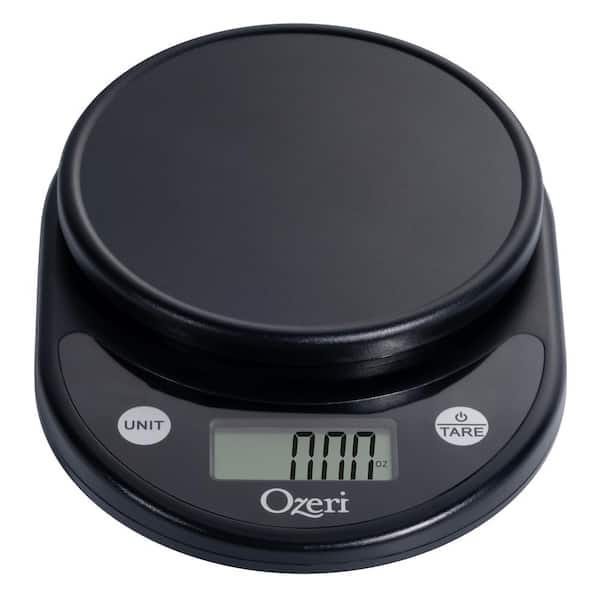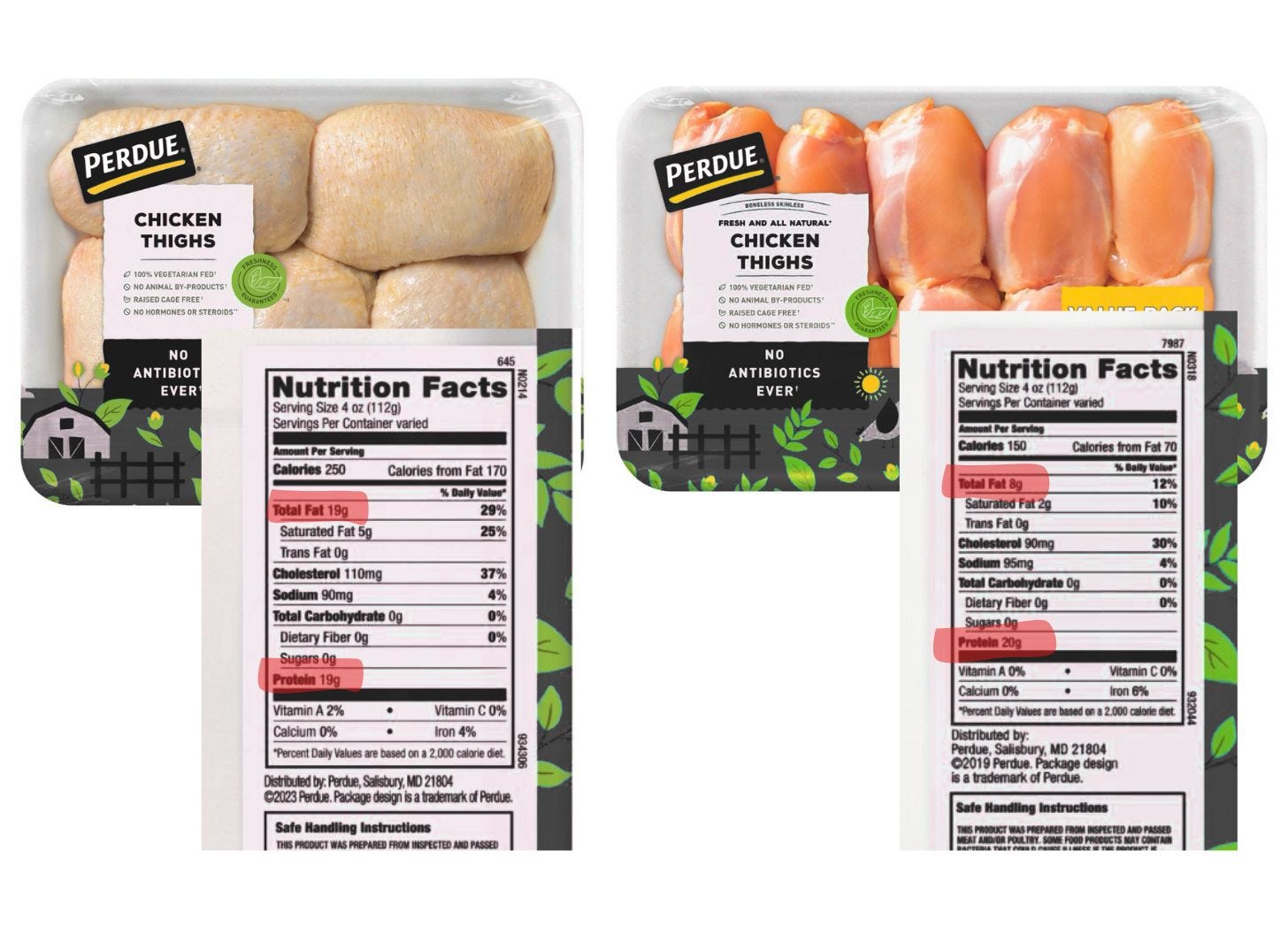In my last article Balancing your food intake, I shared a blank meal plan. Filling that in can be complicated, so I’m sharing the below to help you do that whether you’re looking at a food label or fast food nutrition PDF. The purpose of adding food to an excel sheet meal plan is to create a sustainable 5 day meal plan that you can follow for a significant amount of time, preferably 8 weeks or so, so that you can eat without thinking and know you’re following a plan that can help you reach your body goals - whether you are looking to gain, lose or maintain your current weight.
Adding from a food label
If you were adding eggs to your meal plan, you would add the serving size in parentheses from the label. Adding calories, protein, carbs, fat, saturated fat, sodium and dietary fiber is pretty straightforward. Under sugar though you would only add “added sugars” from the package label because sugars means the natural sugars already present in the food, while “added sugars” has to do with what’s been added by these food companies. In addition, you would double or triple all the above numbers if you were eating 2 or 3 eggs/servings. Fruit does not usually give you nutrition numbers on the package so you can use a website like Calorie King to get your average numbers for all fruits and just fill in the numbers from there.
Another good example is if you were eating Doritos as a snack but planned to eat the whole bag, you’d multiply calories, protein, carbs, etc. from the label by 9 since there are 9 servings in a bag and add those numbers to your sheet. All of this is worth noting as you use food labels to build a meal plan that could work or not according to your goals.
Adding from a restaurant PDF
If you were adding a whole not half Panera grilled cheese to the sheet, you would just type into Google '(restaurant/fast food name) Nutrition PDF' and it’ll give you a document where you can find all of the nutritional information to add to your meal plan. Notice how eating this sandwich almost fulfills your entire sodium intake for the day since the safest amount of sodium to consume is between 2300-3300 mg a day. Same with sodium in a KFC meal below. You will more than likely be eating more than just one grilled cheese or more than just one KFC meal for the entire day so it’s something else to think about.
Using a scale
After you develop a meal plan, sticking to it has a lot to do with weighing everything you eat so that you know you’re consuming the amounts you want to consume, and not more or less. A long time ago I read about how using tracking apps is less accurate because with an excel sheet you’re literally manually putting in the numbers directly from the labels yourself and math does not lie 2+2 will always = 4. It is more tedious but you want to be as accurate as possible when you’re trying to reach goals for your body.

Weighing your food not only ensures accuracy according to goals but also allows you to save money because you can calculate according to a package how many weeks food will last you. For example if I wanted to eat cereal every Saturday and Sunday for breakfast for one month, I would need to make sure whichever cereal I buy has 8 servings because there are 4 weekends in a month, and at 2 days each that would equal 8. Again math is wildly useful in this context even though many people including me hate math lol. But if I were to buy a cereal with 8 servings, then weigh it out every Saturday and Sunday, it will last me exactly one month and in this way I saved money because we tend to pour from boxes and packages freely or sit in front of television with the whole thing at once and finish it before we know it, but if you portion it out with the help of a scale, you will find more control and save money too.
Everything you eat at home can be weighed to your desired grams. Something else I learned along the way is to forget about cups and measuring spoons and ounces and all of that because they’re all different shapes and sizes. Sticking with a universal method like grams is best again for pure accuracy sake. So grams is the way to go (it’s what I’ve been using for so long) and every package will give you the total grams of everything so you don’t have to worry.
Eating to feel better is about numbers
From the Balancing your food intake article where I started off with using a TDEE calculator, to creating an excel sheet and adding food label numbers to it, to using a scale so you understand how much you’re consuming, you notice up until now it’s literally a numbers game. And as I said above anything that has to do with math is pretty absolute since 2+2 will always = 4. This includes when you go to the grocery store and start exploring what’s out there for you to eat. Say if you’re like I want to go to the grocery store Jennifer and see my options before I put a meal plan together, what should I look for when shopping? And I would say the first thing is looking at the numbers on the labels and finding the best versions of what you love to eat, because numbers can get SO crazy at the grocery store and you might not realize but there are healthier alternatives.
For example, let’s take chicken thighs. Without any type of plan let’s just say you’re an average consumer and you feel like cooking tonight so you go to the store to buy them. You might think going to get this is easy right just grab whatever says chicken thighs off the shelf. But I’m going to show you the difference below when it comes to the numbers that can really make a difference in what you’re consuming. And you will notice below and going forward all food product packages I show via images are changed to black as that’s my personal preference lol still creating my goth world through food packages in the Nutrition section of Healing with the Occult.
Okay so the protein to fat ratio in the first product is equal, 19g and 19g, whereas the protein to fat ratio in the second is 8g to 20g. That’s a huge difference, but as an average consumer you’re not aware of this because it is very subtle in the packaging “boneless and skinless” vs. it doesn’t say “boneless and skinless.” And you would not know this unless you’re physically turning the package around and food shopping with a discerning eye. Most people aren’t but imagine buying food like this every week every month every year, say 20 things like this at a time, you’re whole fridge is filled with this stuff, it becomes the explanation for why people don’t feel well or gain weight or end up in the hospital with all kinds of health issues. Finding a version of the food you love with a proportionate level of numbers is not only possible but also creates choice in your life about feeling better or not.
So if you do nothing else, opt for the rational ratio. Something else to note is this irrational ratio I’m referring to is all over outside foods at restaurants as well as fast food places. Now imagine eating these things every day for a year, or years. Again it becomes the reason why people are constantly in the bathroom. We can’t control outside foods and what’s in them, but if we’re looking at numbers, we can control the food because we can control what we buy.
Another tip I learned along the way is to cook at least 80-85% of what you are eating. This means making your own breakfast, lunch and dinner 80-85% of the time. I am sure this sounds behemoth to you - and I was never a cook, I still don’t consider myself a chef by any means. I like ‘fast’ in the kitchen because if it’s not fast I’m not making it so I’ve learned over the years how to make my food fast. But it is totally possible to do this.
To recap, numbers are everything when it comes to feeling better: this is why eating more than you burn changes your body mass to gain weight and eating less than you burn changes your body mass to lose weight - this is why you can achieve balance, save money and use a self-created meal plan accurately by using a scale to weigh your food - this is why over time the quantities you consume matter - and this is why when food shopping it is best to find proportionately numbered alternatives to your favorite foods.
Jennifer Diane is a writer, artist and intuitive based out of New Jersey. Healing with the Occult is a publication that shares hidden, transformative knowledge.








